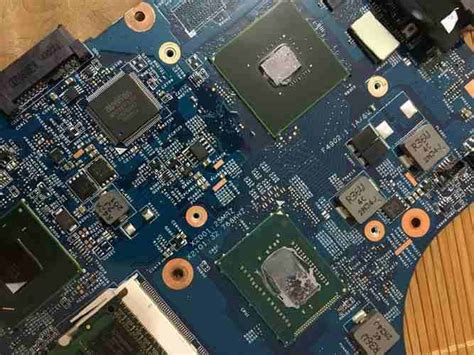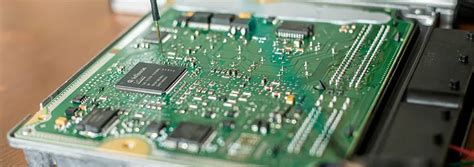Olimex PCB Prototyping: Efficient SMT Design Practices
Key Takeaways
When exploring PCB manufacturing for surface-mount designs, understanding core efficiencies can streamline your workflow. PCB manufacturing companies like Olimex emphasize ROHS-compliant processes to ensure environmental and performance reliability, critical for modern SMT integration. Their immersion gold finishes enhance solderability, reducing defects in high-density layouts—a key factor when managing PCB manufacturing cost at scale.
Tip: Always verify your design files with the manufacturer’s specifications to avoid delays. Early collaboration with PCB manufacturing business partners ensures alignment on layer counts, tolerances, and material choices.
For prototyping, leveraging KiCad library management tools accelerates component placement, while volume discounts offset initial setup expenses. Prioritize fast-turnaround practices like panelization to optimize production batches. When soldering, precise reflow profiles and stencil designs minimize rework—essential for maintaining cost efficiency in small-to-medium runs. By aligning your design strategy with these principles, you’ll balance precision and affordability in PCB manufacturing.

Olimex PCB Prototyping Since 1999
When evaluating PCB manufacturing companies for prototyping needs, Olimex stands out with over two decades of expertise in streamlining PCB manufacturing workflows. Since its founding in 1999, the company has refined its processes to address common challenges in PCB manufacturing business, such as balancing PCB manufacturing cost with quality. Their ROHS-compliant fabrication ensures compatibility with modern surface-mount technology (SMT), while immersion gold finishes enhance solderability and durability for high-density designs.
By leveraging economies of scale, Olimex offers tiered volume discounts, making iterative prototyping cost-effective without compromising precision—a critical advantage when integrating fine-pitch components. Their KiCad library templates further accelerate design cycles, reducing errors common in manual footprint creation. For teams transitioning from through-hole to SMT-heavy layouts, Olimex’s PCB prototyping services provide a reliable bridge between concept and mass production. This focus on repeatable processes ensures consistent results, whether you’re validating a single-board design or preparing for scaled manufacturing.
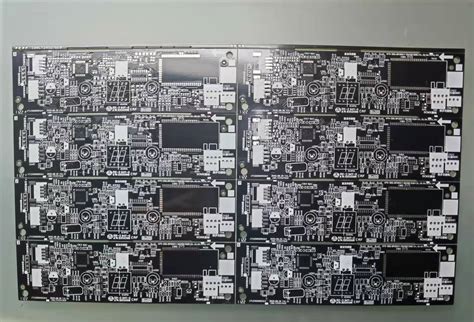
ROHS-Compliant SMT Design Essentials
When designing PCB manufacturing workflows for surface-mount technology (SMT), adhering to ROHS compliance ensures environmental safety and long-term reliability. Modern pcb manufacturing companies prioritize lead-free materials and halogen-free substrates to meet global regulations, which directly impacts component compatibility and thermal management. For instance, selecting ROHS-certified solder paste prevents contamination risks while maintaining strong intermetallic bonds during reflow soldering.
Balancing pcb manufacturing cost with compliance requires strategic material choices. Opting for high-Tg laminates or low-loss dielectrics may increase initial expenses but reduces long-term failure rates, especially in high-density designs. Thermal profiling becomes critical here, as lead-free alloys demand precise temperature control to avoid pad lifting or solder voids.
In a competitive pcb manufacturing business, streamlining compliance documentation—like material declarations and test reports—accelerates approvals and builds client trust. Tools such as automated DFM checks help flag non-compliant footprints early, minimizing redesign cycles. By integrating these practices, you align with Olimex’s expertise in ROHS-aligned prototyping, ensuring seamless transitions to volume production while meeting both technical and regulatory benchmarks.
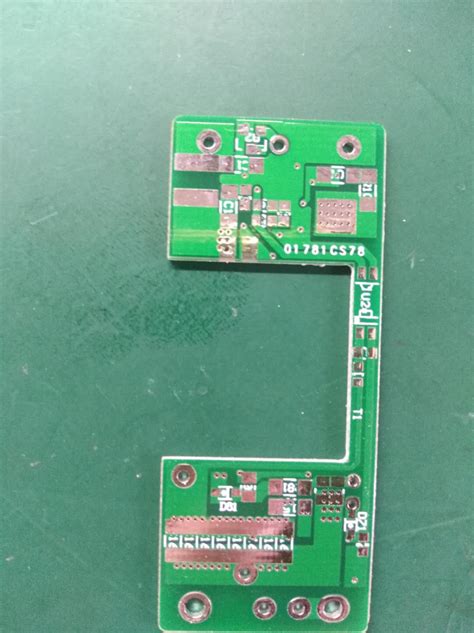
Immersion Gold Finishes for Precision SMT
When designing surface-mount technology (SMT) boards, selecting the right surface finish directly impacts signal integrity and solder joint reliability. PCB manufacturing companies like Olimex leverage immersion gold (ENIG) finishes to ensure flat, oxidation-resistant pads—critical for high-density component placement. This finish combines a thin gold layer over nickel, providing exceptional corrosion resistance and a smooth surface for fine-pitch ICs or BGAs.
Compared to alternatives like HASL (Hot Air Solder Leveling), immersion gold eliminates uneven surfaces that risk misalignment during automated assembly. For PCB manufacturing cost optimization, ENIG reduces rework rates caused by soldering defects, balancing upfront expenses with long-term reliability. Below is a comparison of common finishes:
| Finish Type | Thickness (µm) | Solderability | Cost Impact |
|---|---|---|---|
| HASL | 1-25 | Moderate | Low |
| ENIG | 0.05-0.2 Au | High | Moderate |
| Immersion Ag | 0.1-0.3 | High | Moderate |
In high-volume PCB manufacturing business scenarios, immersion gold’s durability ensures consistent performance across thermal cycles, making it ideal for industrial or automotive applications. You’ll also benefit from planar surfaces that simplify stencil alignment, reducing placement errors. While ENIG increases PCB manufacturing cost slightly compared to HASL, its precision offsets risks of costly post-production fixes—especially when integrating micro-BGA packages or RF components requiring impedance control.
By prioritizing finishes aligned with SMT demands, you maintain signal fidelity while streamlining assembly workflows, a balance that defines modern PCB manufacturing excellence.
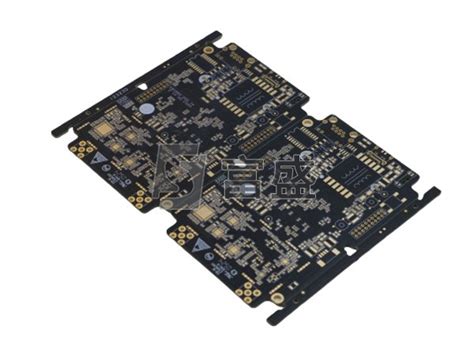
Volume Discount Strategies for PCB Production
When scaling your pcb manufacturing operations, understanding how to leverage volume discounts is key to balancing quality and affordability. Many pcb manufacturing companies structure pricing models to reward larger orders, with per-unit pcb manufacturing cost decreasing as quantities increase—often by 15–30% for batches exceeding 50 boards. To capitalize on this, consider standardizing designs where possible, as repeated use of identical layouts reduces setup fees and material waste.
For businesses focused on high-volume prototyping, aligning orders with production cycles ensures consistent demand, making you eligible for tiered discounts. Some manufacturers offer additional incentives for combining multiple designs into a single panel, optimizing material usage. When evaluating pcb manufacturing business partnerships, inquire about flexible terms for recurring projects, such as rolling monthly orders or prepayment options.
It’s also wise to prioritize suppliers offering ROHS-compliant processes and immersion gold finishes at scale, as these features maintain reliability without inflating costs. Finally, use forecasting tools to predict demand accurately—overestimating volumes risks excess inventory, while underestimating delays time-sensitive projects. By strategically planning orders, you align economies of scale with precision manufacturing outcomes.
KiCad Library Management in Prototyping
Effective PCB manufacturing begins with meticulous design preparation, and managing your KiCad libraries is a critical step in streamlining surface-mount component integration. When prototyping with Olimex boards, you’ll want to ensure your libraries contain verified footprints that align with PCB manufacturing companies’ specifications. Start by organizing component symbols and footprints into logical categories—this reduces errors during design export and accelerates iterations.
For ROHS-compliant designs, cross-check pad dimensions and solder mask clearances against your manufacturer’s guidelines. Many PCB manufacturing cost overruns stem from footprint mismatches, which can delay prototyping cycles. Leverage KiCad’s 3D viewer to validate component placement, especially for fine-pitch ICs or high-density layouts common in modern PCB manufacturing business applications.
Adopting a version-controlled library system ensures consistency across teams. Tools like Git integration allow you to track changes and revert to stable configurations if issues arise. Remember, standardized libraries not only improve accuracy but also reduce time spent troubleshooting during immersion gold finish validation. By aligning your KiCad workflows with PCB manufacturing best practices, you’ll minimize revisions and maximize efficiency in multi-layer SMT projects.
Optimizing Surface-Mount Component Integration
When integrating surface-mount components, precision begins with design choices that align with PCB manufacturing standards. Proper pad geometry, solder mask clearances, and component spacing ensure reliable solder joints while minimizing defects. Leading PCB manufacturing companies like Olimex emphasize designing for manufacturability—balancing density with assembly feasibility to avoid rework costs.
Thermal management plays a critical role here. Asymmetric thermal reliefs or improperly sized pads can create uneven heating during reflow, leading to tombstoning or cold joints. By adhering to ROHS-compliant material specifications, you ensure compatibility with lead-free soldering processes, which directly impacts PCB manufacturing cost and long-term reliability.
For high-density layouts, consider immersion gold (ENIG) finishes. Their flat surface enhances solderability for fine-pitch components, reducing the risk of bridging. This is particularly valuable when scaling prototypes to production volumes—a key consideration for optimizing PCB manufacturing business workflows.
Transitioning from design to assembly? Collaborate early with your manufacturer to validate footprints and stencil designs. This proactive approach minimizes revisions, accelerates turnaround, and ensures seamless integration with automated SMT lines—critical for maintaining cost efficiency without compromising quality.
Fast-Turnaround Prototyping Best Practices
When accelerating PCB manufacturing timelines, balancing speed with precision requires strategic planning. Start by collaborating with PCB manufacturing companies that offer dedicated prototyping lines, as these prioritize smaller batches without compromising quality. For instance, verifying design files with automated DFM (Design for Manufacturing) checks minimizes revisions, directly reducing PCB manufacturing cost and preventing delays.
Leverage standardized panelization layouts to optimize material usage—a critical factor in PCB manufacturing business economics. Use modular component placement to simplify assembly, ensuring surface-mount devices (SMDs) align with automated pick-and-place workflows. Prioritize symmetric thermal relief patterns to avoid warping during rapid soldering cycles, especially for high-density interconnects.
Communication is key: share clear technical documentation, including Gerber files and a detailed bill of materials (BOM), to eliminate ambiguity. Pre-ordering common substrates or solder masks from your manufacturer’s inventory can shave days off lead times. Additionally, real-time tracking systems offered by advanced providers enable proactive adjustments if bottlenecks arise.
Finally, validate prototypes with functional testing early. Pairing electrical testing with visual inspections ensures reliability before scaling production. By integrating these practices, you maintain agility in fast-turnaround projects while safeguarding against costly redesigns—a balance that defines competitive PCB manufacturing strategies.
SMT Soldering Techniques With Olimex PCBs
When implementing SMT soldering techniques with Olimex PCBs, you’ll benefit from their ROHS-compliant processes that ensure environmental safety while maintaining exceptional conductivity. Proper pad design using immersion gold finishes (ENIG) minimizes oxidation risks, critical for fine-pitch components like 0402 resistors or QFN packages. When selecting pcb manufacturing companies, verify their capability to handle surface-mount technology at scale—Olimex’s 24-year expertise guarantees process consistency across prototype and production batches.
Optimizing pcb manufacturing cost requires balancing solder paste volume and reflow profiles. Use stencil thicknesses between 100-130µm for optimal deposition, paired with nitrogen-assisted reflow ovens to reduce voiding. For high-density designs, sequential soldering strategies prevent bridging in tight layouts. These practices directly impact your pcb manufacturing business efficiency, especially when leveraging volume discounts for recurring projects. Always cross-validate thermal management in your DFM checks—Olimex’s stackup options enable precise control over heat dissipation paths during soldering cycles.
Conclusion
When navigating PCB manufacturing challenges, aligning your design strategy with proven production methodologies becomes paramount. ROHS-compliant processes and immersion gold finishes ensure your boards meet both environmental standards and performance expectations, particularly for surface-mount component integration. For PCB manufacturing companies, balancing PCB manufacturing cost with quality hinges on leveraging volume discounts while maintaining precision—a balance Olimex’s 25-year expertise simplifies. By standardizing KiCad library management and adopting panelization best practices, you reduce errors and accelerate timelines, critical for fast-turnaround projects. Whether prototyping or scaling a PCB manufacturing business, these principles streamline workflows, ensuring repeatable success across production phases.

FAQs
How does ROHS compliance affect PCB manufacturing processes?
ROHS compliance ensures lead-free materials are used in pcb manufacturing, reducing environmental impact while maintaining reliability. When working with pcb manufacturing companies like Olimex, this standard guarantees compatibility with modern surface-mount components and global regulatory requirements.
What factors influence pcb manufacturing cost for SMT projects?
Cost depends on design complexity, layer count, and finishes like immersion gold. Volume discounts from pcb manufacturing business providers can lower per-unit expenses, especially for high-precision SMT layouts requiring tight tolerances.
Why choose immersion gold finishes for SMT prototyping?
Immersion gold enhances solderability and surface flatness, critical for fine-pitch components. This finish aligns with pcb manufacturing best practices, ensuring reliable connections in high-density designs.
How do KiCad libraries streamline prototyping workflows?
Pre-validated footprints in KiCad libraries reduce design errors, saving time during pcb manufacturing cost estimation. Proper library management ensures seamless transitions from schematic to fabrication files.
Can small businesses benefit from volume discounts?
Yes. Many pcb manufacturing companies offer tiered pricing, making bulk orders cost-effective even for startups. Aligning production schedules with discount thresholds optimizes budget allocation.
Ready to Optimize Your PCB Project?
For tailored solutions in pcb manufacturing and expert SMT design support, please click here to explore advanced prototyping services.



